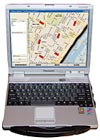‘Beta Site’ World: Testing the Product Potential

With the fast changing pace of security technology, chief security officers and security directors more often are first users of new technology as they partner with firms that evaluate or make systems. These “beta sites” test new features, platforms and systems to determine the product’s effectiveness.
Manufacturers choose beta sites based on an end-user’s willingness to work with the product and provide feedback for improvements or changes. It also helps if the end-user testing the beta product is savvy in the technology in order to offer thorough feedback for changes.

REAL-LIFE TEST SITES
Real world testing can be seen in plain sight, especially at the New York City Metropolitan Transit Authority (NYC MTA). The MTA has chosen to install a remote surveillance and security solution from AirVisual. The company has begun surveying and testing MTA’s facilities for a system deployment. The system will operate via wired and wireless networks allowing for an interoperable communication gateway for first responders and MTA security elements.
MTA subways, buses and railroads provide 2.4 billion trips each year to New Yorkers – the equivalent of about one in every three users of mass transit in the United States and two-thirds of the nation’s rail riders. MTA bridges and tunnels carry more than 300 million vehicles a year, which is more than any bridge and tunnel authority in the nation. A transporation system of this size can be an ideal scenario for testing a beta program or product.
Tom Hansen, CEO of AirVisual knows what beta site pilot programs can do for other enterprises in similar situations. Hansen said, “The remote video solution will be a great case study for other transit systems to learn from, as we are just realizing the true potential of integrated open architecture software platforms and how they interact with common procedures and user results.”

PRODUCTS FOR SAFEKEEPING
End-users are also pioneering new approaches such as a school-wide notification system. Three Chicago-area school districts will use a Web-based notification service, Honeywell Instant Alert for Schools, to improve communication with parents. Oak Lawn-Hometown School District, New Lenox School District and Oswego Community Unit School District will join more than 20 other Illinois districts that currently rely on the service.
Instant Alert for Schools was beta tested originally by four schools: Castro Valley Schools, Calif., Hobbs Schools, N.M., Porter Township Schools, Ind. and Wakefield Schools, Va. Because of the beta testing, all of the issues were picked out and the notification system was ready for public distribution.
The notification system replaces “phone trees” in district schools, giving administrators a way to send messages to thousands of families within minutes via phone, pager, e-mail and/or PDA. Schools can use the service to update parents on both critical and everyday issues, including emergencies, weather-related concerns, bus delays and event cancellations.
The ability to quickly deliver news to a large group is especially important for Oswego Community Unit School District, one of the state’s fastest-growing school districts with a student body that has increased 10 to 18 percent each year for the last 10 years.
“How do we respond to issues that will affect a building or whole district? The notification system allows us to keep up with our increasing population and communicate quickly and accurately with parents,” said Dr. David Behlow, superintendent of Oswego Community Unit School District, which serves more than 13,000 pre-kindergarten through 12th-grade students.
Behlow recalls an anthrax scare at one of the schools several years ago. The district relied on phone trees to share the news. “If we would have had technology like this, I believe it would have minimized concerns, reduced calls from parents and made it easier to manage the situation,” Behlow said.
New Lenox School District, which has 5,500 pre-kindergarten through 8th-grade students, wanted to continue its tradition of proactively reaching out to parents by using the system to streamline the communication process and reduce administrative costs.
“We believed the right people needed to hear the right information in the right order,” said Dr. Michael Sass, New Lenox superintendent. “But with this service, we can simultaneously contact all parties without having to worry about who to call first.”
Similarly, administrators at Oak Lawn-Hometown School District see Instant Alert as a faster way to reach a greater number of contacts, and with fewer resources. The district plans to fund Instant Alert through a federal Emergency Response and Crisis Management grant.
“Emergency response plans are an important aspect of school operations,” said Lauri Calebrese, assistant superintendent of Oak Lawn-Hometown School District, which serves more than 2,900 pre-kindergarten through 8th-grade students. “Parents should be able to send their children to school and have the peace of mind that they’ll be contacted with any important news. Being able to deliver information quickly helps make that possible.”

SIDEBAR:Before the Product Debut
After all the tech talk and product features are through, there’s one questions that pops in the brain – Yes, but will it work? There is often only one way to find out – the old college try. But going through it alone can be time consuming and costly. It can also be downright disappointing when in the end the thing just does not work.
Beta sites alleviate all of that nonsense. Beta sites are real-life test runs of products, technologies or services. A company will give an end-user a product to try out before it is on the market to see what works, what doesn’t, likes and dislikes, feature hang-ups and problem-solvers.
Systems integrator Kyle Johanson tested out XProtect Corporate, a Milestone beta product. Johanson is vice president of J-Systems, a systems integrator in Lombard, Ill. Johanson’s background made him the perfect beta site candidate, as he has a vast knowledge of IT and continues his work as a systems integrator. Johanson understands the importance of beta test sites in order to alleviate any issues before being released to the public.

“It is important that companies put out software or products to high level integrators or end-users and test it and offer feedback. Companies should give a beta product to someone who is impartial and offers true suggestions for improvement. This shows a company is open to and wants to elicit feedback.”
Solving product problems before it is released to the public can also be rewarding for the manufacturer. “I’ve seen too many products or systems that vendors ‘release’ and then they are terrible. The customer has problems from the beginning; this is broken, this doesn’t work, this is bad…problems like this makes a customer not want to buy from that company again,” said Johanson.
Looking for a reprint of this article?
From high-res PDFs to custom plaques, order your copy today!



